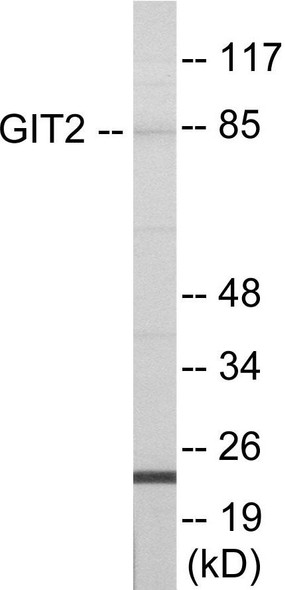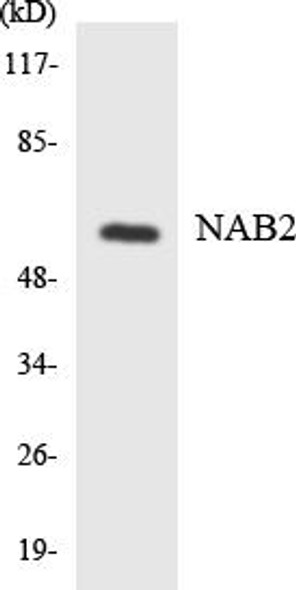Epigenetics and Nuclear Signaling
ZEB2 Colorimetric Cell-Based ELISA
- SKU:
- CBCAB00938
- Product Type:
- ELISA Kit
- ELISA Type:
- Cell Based
- Research Area:
- Epigenetics and Nuclear Signaling
- Reactivity:
- Human
- Reactivity:
- Mouse
- Reactivity:
- Rat
- Detection Method:
- Colorimetric
Description
| Product Name: | ZEB2 Colorimetric Cell-Based ELISA |
| Product Code: | CBCAB00938 |
| ELISA Type: | Cell-Based |
| Target: | ZEB2 |
| Reactivity: | Human, Mouse, Rat |
| Dynamic Range: | > 5000 Cells |
| Detection Method: | Colorimetric 450 nmStorage/Stability:4°C/6 Months |
| Format: | 96-Well Microplate |
The ZEB2 Colorimetric Cell-Based ELISA Kit is a convenient, lysate-free, high throughput and sensitive assay kit that can detect ZEB2 protein expression profile in cells. The kit can be used for measuring the relative amounts of ZEB2 in cultured cells as well as screening for the effects that various treatments, inhibitors (ie siRNA or chemicals), or activators have on ZEB2.
Qualitative determination of ZEB2 concentration is achieved by an indirect ELISA format. In essence, ZEB2 is captured by ZEB2-specific primary antibodies while the HRP-conjugated secondary antibodies bind the Fc region of the primary antibody. Through this binding, the HRP enzyme conjugated to the secondary antibody can catalyze a colorimetric reaction upon substrate addition. Due to the qualitative nature of the Cell-Based ELISA, multiple normalization methods are needed:
| 1. | A monoclonal antibody specific for human GAPDH is included to serve as an internal positive control in normalizing the target absorbance values. |
| 2. | Following the colorimetric measurement of HRP activity via substrate addition, the Crystal Violet whole-cell staining method may be used to determine cell density. After staining, the results can be analysed by normalizing the absorbance values to cell amounts, by which the plating difference can be adjusted. |
| Database Information: | Gene ID: 9839, UniProt ID: O60315, OMIM: 235730/605802, Unigene: Hs.34871 |
| Gene Symbol: | ZEB2 |
| Sub Type: | None |
| UniProt Protein Function: | ZEB2: Transcriptional inhibitor that binds to DNA sequence 5'- CACCT-3' in different promoters. Represses transcription of E- cadherin. Defects in ZEB2 are the cause of Mowat-Wilson syndrome (MWIS); also known as Hirschsprung disease-mental retardation syndrome. A complex developmental disorder characterized by mental retardation, delayed motor development, epilepsy, microcephaly and a wide spectrum of clinically heterogeneous features suggestive of neurocristopathies at the cephalic, cardiac, and vagal levels. Some patients manifest Hirschsprung disease. Affected patients show an easily recognizable facial appearance with deep set eyes and hypertelorism, medially divergent, broad eyebrows, prominent columella, pointed chin and uplifted, notched ear lobes. Belongs to the delta-EF1/ZFH-1 C2H2-type zinc-finger family. |
| UniProt Protein Details: | Protein type:Motility/polarity/chemotaxis; Transcription, coactivator/corepressor; DNA-binding; C2H2-type zinc finger protein Chromosomal Location of Human Ortholog: 2q22.3 Cellular Component: nucleus Molecular Function:protein binding Biological Process: negative regulation of transcription from RNA polymerase II promoter; pigmentation during development; positive regulation of melanin biosynthetic process; positive regulation of melanocyte differentiation; positive regulation of transcription from RNA polymerase II promoter Disease: Mowat-wilson Syndrome |
| NCBI Summary: | The protein encoded by this gene is a member of the Zfh1 family of 2-handed zinc finger/homeodomain proteins. It is located in the nucleus and functions as a DNA-binding transcriptional repressor that interacts with activated SMADs. Mutations in this gene are associated with Hirschsprung disease/Mowat-Wilson syndrome. Alternatively spliced transcript variants have been found for this gene.[provided by RefSeq, Jan 2010] |
| UniProt Code: | O60315 |
| NCBI GenInfo Identifier: | 13124503 |
| NCBI Gene ID: | 9839 |
| NCBI Accession: | O60315.1 |
| UniProt Secondary Accession: | O60315,Q9UED1, A0JP09, B7Z2P2, F5H814, |
| UniProt Related Accession: | O60315 |
| Molecular Weight: | 133,806 Da |
| NCBI Full Name: | Zinc finger E-box-binding homeobox 2 |
| NCBI Synonym Full Names: | zinc finger E-box binding homeobox 2 |
| NCBI Official Symbol: | ZEB2 |
| NCBI Official Synonym Symbols: | SIP1; SIP-1; ZFHX1B; HSPC082; SMADIP1 |
| NCBI Protein Information: | zinc finger E-box-binding homeobox 2 |
| UniProt Protein Name: | Zinc finger E-box-binding homeobox 2 |
| UniProt Synonym Protein Names: | Smad-interacting protein 1; SMADIP1; Zinc finger homeobox protein 1b |
| Protein Family: | Zinc finger E-box-binding homeobox |
| UniProt Gene Name: | ZEB2 |
| UniProt Entry Name: | ZEB2_HUMAN |
| Component | Quantity |
| 96-Well Cell Culture Clear-Bottom Microplate | 2 plates |
| 10X TBS | 24 mL |
| Quenching Buffer | 24 mL |
| Blocking Buffer | 50 mL |
| 15X Wash Buffer | 50 mL |
| Primary Antibody Diluent | 12 mL |
| 100x Anti-Phospho Target Antibody | 60 µL |
| 100x Anti-Target Antibody | 60 µL |
| Anti-GAPDH Antibody | 60 µL |
| HRP-Conjugated Anti-Rabbit IgG Antibody | 12 mL |
| HRP-Conjugated Anti-Mouse IgG Antibody | 12 mL |
| SDS Solution | 12 mL |
| Stop Solution | 24 mL |
| Ready-to-Use Substrate | 12 mL |
| Crystal Violet Solution | 12 mL |
| Adhesive Plate Seals | 2 seals |
The following materials and/or equipment are NOT provided in this kit but are necessary to successfully conduct the experiment:
- Microplate reader able to measure absorbance at 450 nm and/or 595 nm for Crystal Violet Cell Staining (Optional)
- Micropipettes with capability of measuring volumes ranging from 1 µL to 1 ml
- 37% formaldehyde (Sigma Cat# F-8775) or formaldehyde from other sources
- Squirt bottle, manifold dispenser, multichannel pipette reservoir or automated microplate washer
- Graph paper or computer software capable of generating or displaying logarithmic functions
- Absorbent papers or vacuum aspirator
- Test tubes or microfuge tubes capable of storing ≥1 ml
- Poly-L-Lysine (Sigma Cat# P4832 for suspension cells)
- Orbital shaker (optional)
- Deionized or sterile water
*Note: Protocols are specific to each batch/lot. For the correct instructions please follow the protocol included in your kit.
| Step | Procedure |
| 1. | Seed 200 µL of 20,000 adherent cells in culture medium in each well of a 96-well plate. The plates included in the kit are sterile and treated for cell culture. For suspension cells and loosely attached cells, coat the plates with 100 µL of 10 µg/ml Poly-L-Lysine (not included) to each well of a 96-well plate for 30 minutes at 37°C prior to adding cells. |
| 2. | Incubate the cells for overnight at 37°C, 5% CO2. |
| 3. | Treat the cells as desired. |
| 4. | Remove the cell culture medium and rinse with 200 µL of 1x TBS, twice. |
| 5. | Fix the cells by incubating with 100 µL of Fixing Solution for 20 minutes at room temperature. The 4% formaldehyde is used for adherent cells and 8% formaldehyde is used for suspension cells and loosely attached cells. |
| 6. | Remove the Fixing Solution and wash the plate 3 times with 200 µL 1x Wash Buffer for five minutes each time with gentle shaking on the orbital shaker. The plate can be stored at 4°C for a week. |
| 7. | Add 100 µL of Quenching Buffer and incubate for 20 minutes at room temperature. |
| 8. | Wash the plate 3 times with 1x Wash Buffer for 5 minutes each time. |
| 9. | Add 200 µL of Blocking Buffer and incubate for 1 hour at room temperature. |
| 10. | Wash 3 times with 200 µL of 1x Wash Buffer for 5 minutes each time. |
| 11. | Add 50 µL of 1x primary antibodies (Anti-ZEB2 Antibody and/or Anti-GAPDH Antibody) to the corresponding wells, cover with Parafilm and incubate for 16 hours (overnight) at 4°C. If the target expression is known to be high, incubate for 2 hours at room temperature. |
| 12. | Wash 3 times with 200 µL of 1x Wash Buffer for 5 minutes each time. |
| 13. | Add 50 µL of 1x secondary antibodies (HRP-Conjugated AntiRabbit IgG Antibody or HRP-Conjugated Anti-Mouse IgG Antibody) to corresponding wells and incubate for 1.5 hours at room temperature. |
| 14. | Wash 3 times with 200 µL of 1x Wash Buffer for 5 minutes each time. |
| 15. | Add 50 µL of Ready-to-Use Substrate to each well and incubate for 30 minutes at room temperature in the dark. |
| 16. | Add 50 µL of Stop Solution to each well and read OD at 450 nm immediately using the microplate reader. |
(Additional Crystal Violet staining may be performed if desired – details of this may be found in the kit technical manual.)






